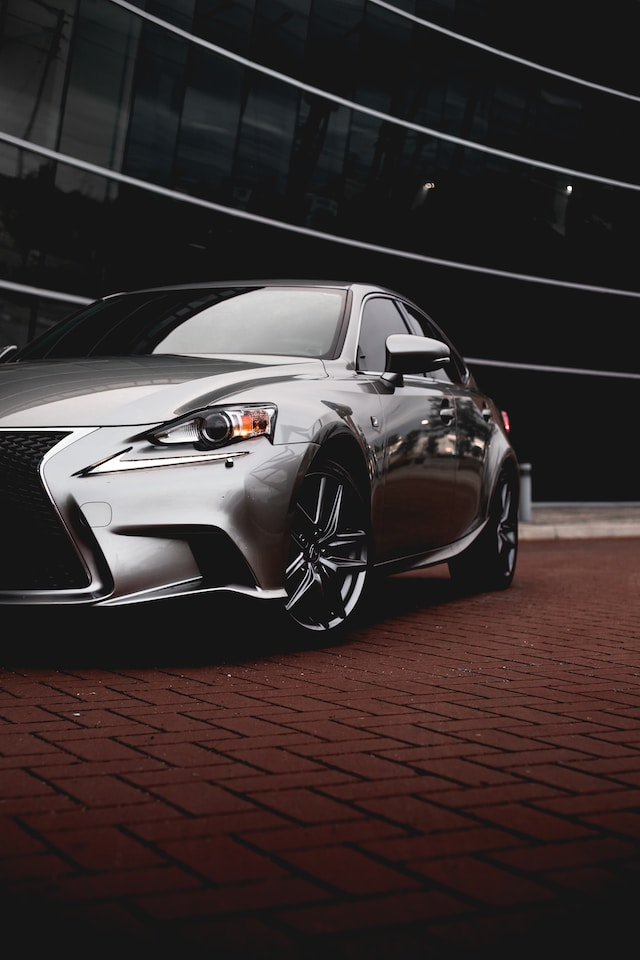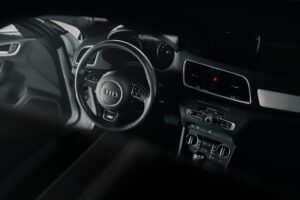
The History of Jaguar F-Type: From Concept to Reality
Contents
- 1 The first Jaguar F-Type debuted in 2013.
- 2 The car was developed by Ian Callum, director of Jaguar Design, who also designed the XE and XF models.
- 3 It was initially planned as a successor to the Jaguar XK8, but instead became a more affordable sports car than its predecessor.
- 4 Its sporty design includes a long hood and short rear deck, allowing for a lower center of gravity and a better center of mass.
- 5 The F-Type has a high power-to-weight ratio thanks to its all aluminum chassis with body panels made from high-strength steel.
- 6 Instead of using an automatic transmission, the car has an eight-speed ZF manual gearbox and comes standard with two seats; however, it can carry two people in the front and two more in the rear without losing much trunk space.
- 7 It also has two trunks! One under the hood for storage and one at the back for passengers’ luggage.
- 8 A convertible version was released in 2015 along with a new trim level called SVR which has 575 horsepower under the hood.
- 9 Conclusion
The Jaguar F-Type is one of the most iconic cars ever to be produced by Jaguar. It was first released in 2013, and since then it has become a favorite among sporty luxury car lovers. The F-Type is known for its sleek design, high performance capabilities and efficient fuel consumption. It’s also one of the few convertibles that can seat four people comfortably!
The first Jaguar F-Type debuted in 2013.
The first generation of the Jaguar F-Type was introduced in 2013, and it was developed by Ian Callum, director of Jaguar Design. The two-seater roadster is the successor to the Jaguar XK8 that was produced from 1996 until 2004. The F-Type is more affordable than its predecessor and offers better performance thanks to its lighter chassis structure (it weighs about 200 pounds less than an XK8).
The car was developed by Ian Callum, director of Jaguar Design, who also designed the XE and XF models.
Ian Callum is a British car designer who has worked for Jaguar since 1999. He was born in 1960 and graduated from the University of Edinburgh with a degree in industrial design. Callum joined Lotus as an apprentice before moving to Ford Motor Company as an interior designer, where he stayed until 1991 when he began working as an exterior designer for Aston Martin. In 1999, Callum became Director of Design at Jaguar Cars Ltd., where he has designed many models including XE and XF sedans (which are sold under different names).
It was initially planned as a successor to the Jaguar XK8, but instead became a more affordable sports car than its predecessor.
The F-Type cost less than the XK8 because it was smaller and lighter, as well as cheaper to produce thanks to aluminum construction.
Its sporty design includes a long hood and short rear deck, allowing for a lower center of gravity and a better center of mass.
The F-Type is a sports car, so it has a long hood and short rear deck. This design helps with handling and stability by giving the car a lower center of gravity and better balance. A lower center of gravity means that the car’s mass is concentrated more towards its centerline than if it were higher off the ground (or in this case, on top of its suspension). A better balance between weight distribution helps keep your Jaguar F-Type stable during turns or when taking corners at high speeds.
If you’re looking for an exciting new ride with plenty of power under its hood but also want something that handles well around corners, look no further than our selection here at [your local dealership].
The F-Type has a high power-to-weight ratio thanks to its all aluminum chassis with body panels made from high-strength steel.
The low center of gravity and low center of mass help improve agility and handling, making it feel much lighter than it actually is.
Instead of using an automatic transmission, the car has an eight-speed ZF manual gearbox and comes standard with two seats; however, it can carry two people in the front and two more in the rear without losing much trunk space.
The F-Type comes standard with an eight-speed ZF manual gearbox, which means you have to shift gears yourself. The good news is that this makes the car more fun to drive and gives you more power than an automatic transmission would.
The second reason you might want to opt for a manual transmission over an automatic one is fuel economy: Manual transmissions allow for better gas mileage because they can be shifted into lower gears at lower speeds, thus reducing engine speed and fuel consumption without sacrificing performance or acceleration times (because your foot remains on the accelerator pedal).
It also has two trunks! One under the hood for storage and one at the back for passengers’ luggage.
The trunk at the back can fit two people, so if you have a passenger in your car, it’s still possible to fit their luggage in there as well!
Jaguar claims that this new model is more efficient than its predecessor due to its lighter weight and increased power output from its engine (which we’ll discuss later).
A convertible version was released in 2015 along with a new trim level called SVR which has 575 horsepower under the hood.
In 2008, the F-Type was introduced as a successor to the Jaguar XK8. It had been initially planned as such but was ultimately marketed as a more affordable sports car than its predecessor. The F-Type has an all aluminum chassis with body panels made from high-strength steel.
The first generation F-Type had only three variants: Coupe, Convertible and SVR (Supercharged). The Coupe variant came with a 3.0L V6 engine producing 340 horsepower while other models were equipped with either a 5 liter V8 engine or 4 liter supercharged V8 engine which produced respectively 400 horsepower and 550 horsepower respectively.
Conclusion
The Jaguar F-Type is a great sports car that offers performance, comfort and style. It’s also an excellent choice for those who want something more luxurious than just another muscle car or SUV on the market today.








